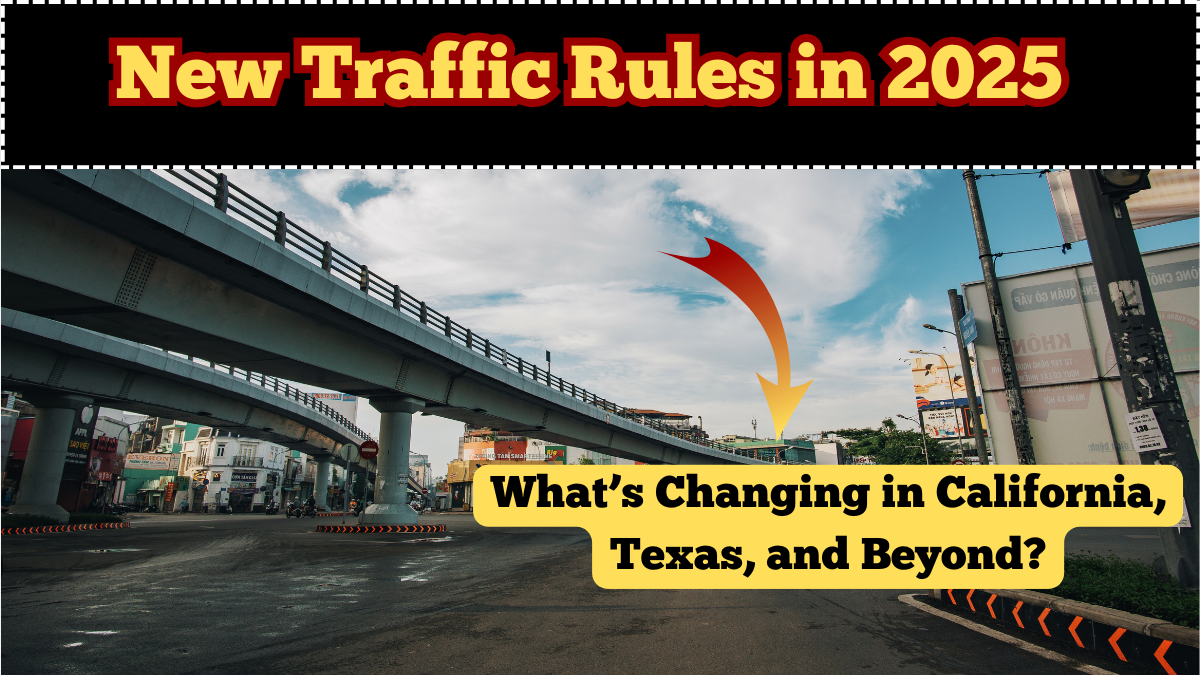In 2025, every U.S. state has implemented updated traffic rules by state, changing how drivers operate across highways, cities, and residential zones. These new regulations focus on enhanced road safety, tougher penalties, and streamlined license laws. Whether you’re a daily commuter or preparing for a license renewal, it’s vital to stay updated on each state’s latest laws to avoid unexpected fines or violations.
The revised rules aren’t just minor updates. States like California and Texas are leading the way in adjusting speed limits, redefining penalties, and tightening enforcement. Understanding these license updates could save you money—and your license.

State-by-State Key Rule Updates
Different states are introducing region-specific laws to address localized issues. The most notable changes include:
-
California has introduced variable speed limits in high-traffic zones based on time and weather conditions.
-
Texas has rolled out stricter enforcement for distracted driving and added new restrictions under its updated license laws.
-
New York now has enhanced fines for repeat offenders and DUI-related traffic offenses.
-
Florida requires real-time vehicle insurance and registration checks before license renewal.
Each of these traffic rules by state ensures compliance with the 2025 federal highway safety strategy while respecting regional challenges.
What Drivers Must Now Follow
Here’s a snapshot of what has changed for drivers nationwide:
| Rule Category | Old Law (2024) | New Law (2025) |
|---|---|---|
| License Renewal | 10-year renewal cycle | 5-year renewal with mandatory vision test |
| Speed Limits | Static statewide limits | Smart/dynamic speed zones introduced |
| Traffic Fines | Fixed based on violation | Increased based on frequency and severity |
| Teen Licensing | Supervised for 6 months | Supervised for 12 months + curfew limitations |
Across the board, license updates now include biometric verification and additional documentation for out-of-state transfers. Several states are also piloting digital licenses.
How the New Rules Impact Everyday Drivers
The stricter license laws mean you may have to take additional steps for even basic driving tasks like updating your address or renewing your car registration. The newly structured fines are also higher for repeat offenses and could now directly affect your car insurance premiums.
Daily drivers in congested areas should take note of variable speed limits, which will be automatically enforced by digital signage and traffic cameras. Being unaware of these changes could lead to violations under the new regulations.
For cross-state travelers, these traffic rules by state may differ drastically. While one state may permit a certain speed, a neighboring one may fine you for the same. Knowing these distinctions will help you stay compliant and safe.
What Should You Do Next?
To stay ahead, drivers are advised to:
-
Review local DMV sites for detailed license updates
-
Be alert for new road signage indicating dynamic speed limits
-
Understand the fines applicable in each state for common offenses
-
Prepare for shorter license renewal windows and new verification protocols
States have committed to improving safety and reducing fatalities, and these new regulations are expected to play a crucial role in achieving that. Whether you’re in California, Texas, or elsewhere, updated license laws are here—and they’re here to stay.
FAQs
What are the key changes in traffic rules by state for 2025?
Each state has introduced new reforms including dynamic speed zones, tighter license renewal rules, and increased fines for repeat violations.
Are speed limits changing in all states?
Not all states, but many—like California and Nevada—are introducing dynamic speed limits in congested or weather-prone areas.
What kind of license updates should drivers expect?
Expect biometric verification, shorter renewal windows, and stricter penalties for lapsed licenses.
How are fines different in 2025?
Fines are now tiered by offense severity and frequency. Repeat offenders can face doubled or tripled penalties.
Do all states follow the same new regulations?
No. The traffic rules by state differ. It’s important to check with your local DMV or transportation authority.
Click here to know more.

